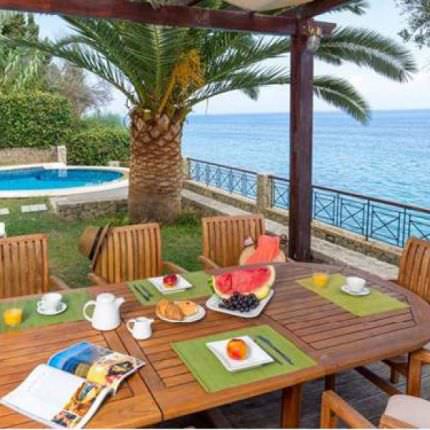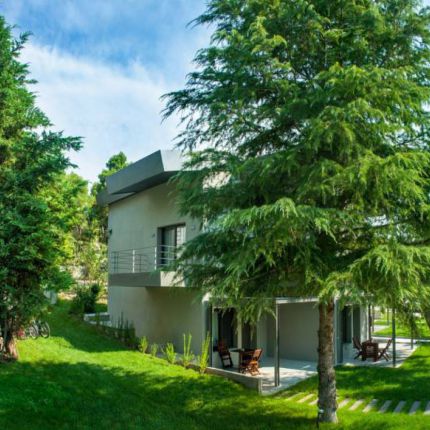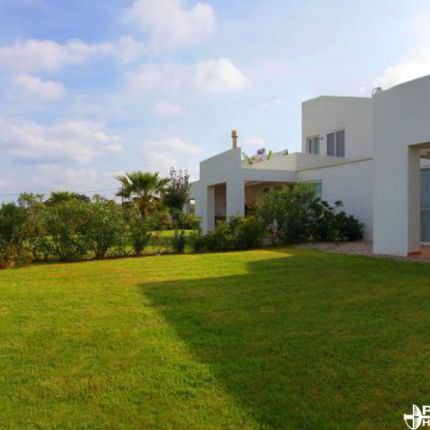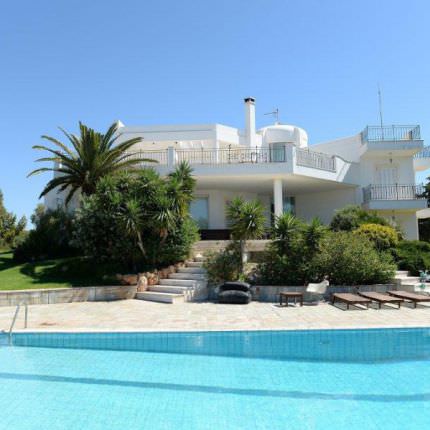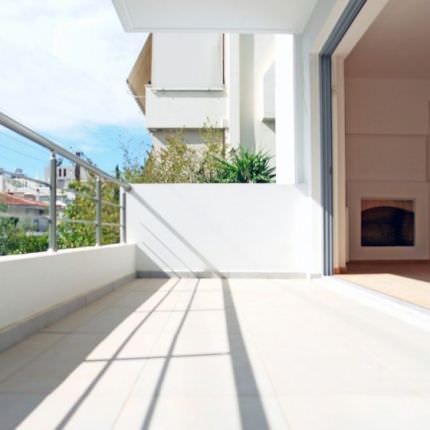Euboea Islandis the second biggest island in Greece after Crete situated to the north from Athens. Island isconnected with the continent with two bridges. The oldest bridgeof Euripus of only 14 meters issituated over the Euripus Strait. Theextraordinary changes of tide which take place in this passage have been asubject of note since classical times. At one moment the current runs like ariver in one direction, and shortly afterwards with equal velocity in theother. A bridge was first constructed here in the twenty-first year of thePeloponnesian War (410 BC). The name Euripus was corrupted during the MiddleAges into Evripo and Egripo, and in this latter formtransferred to the whole island. The second new bridge of 600meters is only for automobile transportation.

Euboea Island is thecontrast of rich nature recourses, interesting history and typical Greekatmosphere. Though the island is situated comparatively close to Athens, the atmospherehere is quiet and relaxing. Unbelievably beautiful beaches, pure sea, pine treeforests, impressive mountains in combination with noisy Greek taverns, tastykitchen and plenty of wine make your rest here unforgettable.
Chalkida is the capital of the Islandsituated on the Straitof Euripos in itsnarrowest point. The buildings of Castro district are constructed in ancientVenetian and Turkish style. This area is inhabited by Turkish and Jewish familiesmoved here in 1980 from Frakia. The mostinteresting object is the Church ofSaint Paraskevi, which was once the chief church of the Venetians; it datesfrom the Byzantine period, though many of its architectural features areWestern. In 1899, Chalkida became the prefectural capital of Euboea.

Eretria located on the western coast of theisland, was an important Greek polis in 5th-6th B.C. Themodern town of Eretriawas established in 1824, after Greek Independence, and is now a popularbeachside resort. Excavations of ancient Eretriabegan in the 1890s and have been conducted since 1964 by the Greek ArchaeologicalService (11th Ephorate of Antiquities) and the SwissSchool of Archeology in Greece, who also established its archaeologicalmuseum, which displays finds from Eretriaand Lefkandi. The town can be reached from Atticaby ferry or through Chalkida by car. It's an important station on the way tothe south of the island. It has many taverns and a long beach promenade. The archaeologicalexcavations are located on the northern edge of the modern town.
Theroad from Chalkida to Eretria passes by the fineMalakonta beach which has amplefacilities for tourists and then goes through the village of Vassilikowhich possesses distinctive local color and a Venetian tower. Close by are the seaside settlements of Lefkantiand Kambos. Continuing South along the coastal road, on the shores of the Strait of Euboea,one comes upon the townshipof Amarinthos which has afine beach, tranquil surroundings and plenty of attractive fish dishes tooffer.
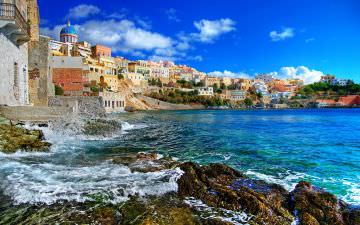
Continuing South, the road comes upon the fork for Lepoura from which it leadsto Karistos. The area is thick with pinewoods and, in the past, fossilsof pre-historic animals were found there. Inland lies the township of Stirawhere lots of streams flow amid spreading plane trees. Further South is the village of Marmari. All around arepicturesque sites and excellent beaches. There is a ferry-boat service toRafina. The Island becomes more wooded withplane trees, pine trees in the north. It is worth visiting the village of Prokopiwith its churchof Agios Ioannis Rossoswhich attracts numerous pilgrims. The large village of Mantoudi,beyond Prokopi, overlooks the plain of ancient Kirintha from a height. Thereare plane trees and pine trees everywhere. The road then descends themountainside of Kandili and passes through picturesque villages such asSkepasti and Kehries. The road leads into Limni a really charmingtownship with a long history and well preserved traditions whose white housesare reflected in the waters of the Gulfof Euboea.
In 172 km from Chalkida there is resort calledEdipsos. It is one of the biggest resorts in Greece Thermae Sylla Spa withhot medical springs mentioned by Aristotle and Strabo. Thermae Sylla Spa was built in the mostbeautiful location of the town in 1987. It was considered a precious jewel forthe area, and later welcomed guests such as Aristotle Onassis, Maria Callas,Sir Winston Churtchill, Omar Shariff, Greta Garbo and others. Nowadays it is a combinationof an ultra-modern Spa-resort and a luxurious hotel.



